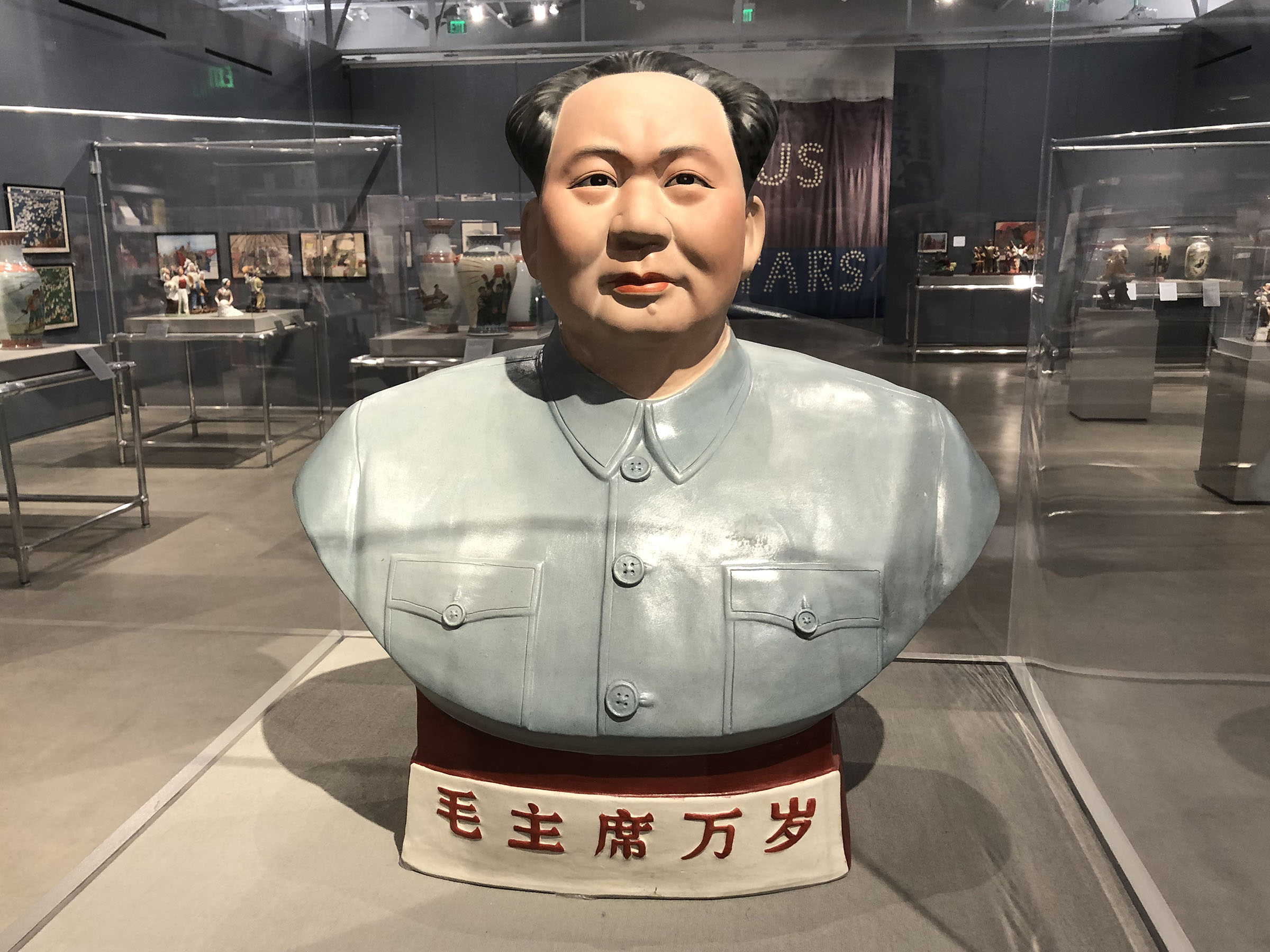 |
| Jingdezhen Art Porcelain Factory, Bust of Mao, 1966-1976. Private collection |
Porcelain was a medium of imperial ostentation and bourgeois knick-knacks. It might seem it would have had little place in Mao Zedong's proletarian-forward Cultural Revolution (1966-1976). In fact porcelain played an important role in Maoist art and propaganda, signaling the continuity of Chinese culture and the legitimacy of Mao's power. What did change was the aesthetic notion of truth to materials. During the Cultural Revolution, porcelain became a medium for polychrome sculpture and a flat support for ink or photographic pictures. Jingdezhen, which had produced porcelain for dynasties from the Song onward, was retooled for uncanny-valley likenesses of Mao.
The Wende Museum's "(De)constructing Ideology: The Cultural Revolution and Beyond" is its first exhibition to focus on East Asia. It brings together Maoist porcelain, posters, and ephemera as well as latter Chinese art critiquing the Maoist era.
 |
| Miner and Factory Workers, 1966-1976. Private collection |
Small-scale figures of Chinese farmers, miners, and factory workers recall the comic porcelains of the rococo West. But there's nothing funny about them: The people are the heroes now.
 |
| Jingdezhen Art Porcelain Factory, Learn from the Example of the Revolutionary Youth Comrade Jin Xunhua, 1972. Private collection |
The vase
Learn from the Example of the Revolutionary Youth Comrade Jin Xunhua adapts a 1970 poster by Xu Chunzhong and Chen Yifei. Jin Xunhua drowned while trying to secure utility poles in a 1969 flood. America's working-class heroes may rate 15 minutes of news channel fame but rarely this kind of material validation. Is the Chinese or American model of celebrity less absurd?  |
| Wu Kang, Mao and Communist Leaders (porcelain), 1966-1976. Private collection |
You could easily mistake Wu Kang's portraits of famous Communists for lithographs behind glass. They're glazed ceramic slabs—"posters" in porcelain.
 |
| Yang Houxing, Chairman Mao Meets the Dalai Lama and Panchen Lama (porcelain), 1960s. Private collection |
Yang Houxing specialized in painting black and white photographs onto porcelain. Up close his images dissolve into hand-painted dashes and Benday dots.
 |
| Xu Huanwen, Fighting for Steel (porcelain), 1975. Private collection |
Traditional Chinese ink painting was also turned to ideological ends. Xu Huanwen's
Fighting for Steel punctuates a traditional landscape with the satanic mills of China's 20th-century industrial revolution. The inscription translates, "Anyone who works hard will succeed, look at the Four Modernizations through the work of making steel." It was Mao's failed industrialization program, the Great Leap Forward, that led him to consolidate power with the Cultural Revolution. The multi-media cult of Mao reached the New York of Andy Warhol.
 |
| Zhao Huasheng, Striving for Steel at the Front Line (poster), 1972. Wende Museum collection, donated by David E. James |
The brushwork of Zhao Huasheng's (paper) poster, Striving for Steel at the Front Line, is traditional enough for the industrial subject to jar, and also weirdly redolent of Madison Avenue.
A
Ping-Pong Clock in plastic and metal commemorates the ping-pong diplomacy that put Nixon in China. The opening of diplomatic and trade channels ultimately led to the paradox of 21st century China, mainspring of the late-stage socialist and capitalist worlds.
 |
| Ping-Pong Clock, 1970s (metal and plastic). Private collection |








Comments
I wonder if they're marked.
The image of Mao Tse-tung reminds me of Andy Warhol's silk-screened paintings of China's leader from decades ago. Mao in the 1960s organized a bit of his own Cancel Culture. Or what was known as his Cultural Revolution.
Mao went after intellectuals and academics, NOT right-wing bigots.
Mao sent his ideological enemies to labor camps, NOT to Truth Social or 4chan.
Just shut up!!!